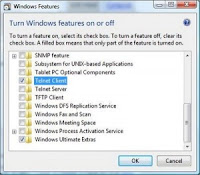
If you want a unique digital photo frame, how about considering the E-Blue Mirar 7" 16:9 Digital Photo Frame. You get to see your pictures in high quality display because this frame has a high resolution. You can play a song while the photos keep changing because this digital frame includes a MP3 Player. It also has a built-in speaker. It can be manipulated by manual or remote controls. You can transfer pics to it using memory cards such as CF, MS, MS Pro, SD, SDHC, MMC and xD. Product features
Digital Photo Frame with Touch Sensitive Buttons
7" Colour TFT active Matrix LCD
Touch Buttons / Remote Control
Slideshow with MP3 audio playback
Clock / Calendar / Alarm
Resolution: 800 x 480dpi
Contrast Radio: 400:1
Brightness: 350cd/m2
Viewing Angle: 120 (Horizontal)/ 100 (Vertical)
Controls: Touch buttons / Remote control
Extenal Memory: CF / MS / MS Pro / SD / SDHC / MMC / xD Card
Other Inputs & Outputs: USB 2.0
Compatible Image: JPEG
Max Image Size: 12MB
Audio Built-in Speaker: 1 x 1 W
Dimension: 207x 160 x 25mm (approx.)
Weight: 518g
Digital Photo Frame with Touch Sensitive Buttons
7" Colour TFT active Matrix LCD
Touch Buttons / Remote Control
Slideshow with MP3 audio playback
Clock / Calendar / Alarm
Resolution: 800 x 480dpi
Contrast Radio: 400:1
Brightness: 350cd/m2
Viewing Angle: 120 (Horizontal)/ 100 (Vertical)
Controls: Touch buttons / Remote control
Extenal Memory: CF / MS / MS Pro / SD / SDHC / MMC / xD Card
Other Inputs & Outputs: USB 2.0
Compatible Image: JPEG
Max Image Size: 12MB
Audio Built-in Speaker: 1 x 1 W
Dimension: 207x 160 x 25mm (approx.)
Weight: 518g

































